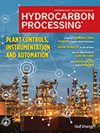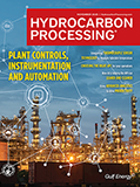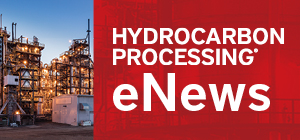Economics
GE Digital achieves AWS energy competency status
GE Digital, the leading software innovator enabling the power generation and energy industries announced that it has achieved Amazon Web Services (AWS) Energy Competency status.
Oil tops $120 a barrel on Saudi pricing despite OPEC+ deal
Oil prices were largely unchanged after choppy trade on Monday, buoyed by Saudi Arabia raising its July crude prices but amid doubts a higher output target for OPEC+ oil producers would ease tight supply.
The downstream rundown: In case you missed it
In case you missed any downstream news, this piece will give you a summary of some of the top stories from last week.
Slovakia says hardest hit by Russia oil sanctions, expects solidarity
Slovakia said on Friday it would be hardest hit by European Union sanctions on Russian oil and it expected solidarity from Brussels to mitigate the impact.
U.S. crude, fuel stockpiles fall in tight market
U.S. crude oil and fuel stockpiles fell last week, as demand continued to outstrip supply, with commercial crude inventories drawing down even as more strategic reserves entered the market.
Slovak refiner says sanctions plan will halt exports, threaten operations
Slovnaft, a unit of Hungary's MOL, said that planned sanctions on Russian oil would in their current form ban oil product exports after 8 months from Slovnaft to its key markets in central Europe such as the Czech Republic, Austria and Poland.
Industry Perspectives: Hydrocarbon Processing’s Mid-Year Update webcast to be held in late June
Over the past several years, the hydrocarbon processing industry (HPI) has been engaged in a whirlwind of peaks and valleys.
Supply Chain: Strategic cost management: Uncover supply chain inefficiencies
Controlling costs is critical for any energy company. Firms may spend to grow through acquisition, develop new business, gain market share or invest in new opportunities.
History of the HPI: The 1970s: Crises, clean air, plastic bottles and the DCS
The 1970s were marked by several historical events that affected not only the hydrocarbon processing industry (HPI) but nations around the world.
Advanced cleaner technology: Leveraging tailored solutions for reliability goals
Operators at refineries, petrochemical plants and power generation companies are under constant pressure to reduce maintenance and operational costs, boost productivity, minimize risk of unplanned outages and maximize time between overhaul periods.

- Valmet to acquire Severn Group to strengthen Process Performance Solutions segment 12/22
- World’s first dynamic green ammonia plant starts operations in Denmark 12/22
- Baker Hughes to supply liquefaction equipment for Commonwealth LNG export project 12/22
- South Korea petrochemical firms on track to cut up to 3.7 MM tons of output 12/22
- MOL and JERA sign HoAs for the charter of ammonia carriers 12/22
- China's November fuel oil imports up 15% from October 12/22




